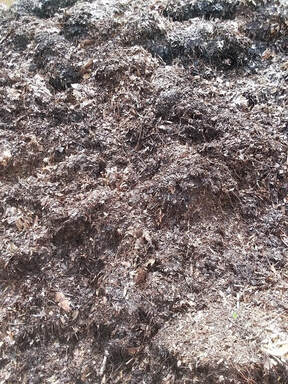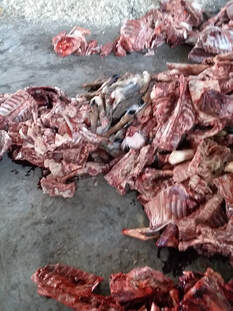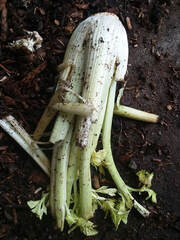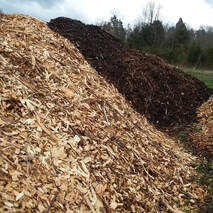|
Read below or click this link to download this guide for free.
|
| ||||||
Feedstocks are the materials you mix to make compost. You can use any organic material. However, you must balance a few things for your process to work, be efficient, and be sanitary. Just heaping up a large amount of food scraps will create a tremendous public nuisance and get you shut down. You need to balance your carbon and nitrogen. You’ll also need to add a bulking agent so that oxygen can percolate through the material.
High Carbon Compost Feedstocks

High Carbon (C) feedstocks include things like leaves and straw. In my operation, I use leaves that are collected by the municipal street division. As the leaf truck crews suck the leaves up, the leaves are broken somewhat. It would be better to shred them more, but it’s certainly better than whole leaves. Microbes can access the leaves better when they don’t have to penetrate the waxy cuticle that covers the surface of an unbroken leaf.
I don't use straw due to the possibility of it containing persistent herbicides.
You can and should stockpile High C feedstocks.
High Nitrogen Compost Feedstocks

High Nitrogen (N) feedstocks include things like manure, green plant material, and food scraps. In my operation, I use food scraps.
I do not use manure or bedding due to the possibility of persistent herbicides.

You cannot stockpile High N feedstocks; so you must be prepared to mix them when you get them.
Bulking Agents

Bulking agents include things like wood chips, which is what I use in my operation. Even though wood chips are high Carbon materials, they don’t break down very much in the time frame of a composting operation. Their purpose is more to decrease the bulk density and increase the porosity of the material so that oxygen can move through it and keep the aerobic bacteria populations high.
You can and should stockpile bulking agents. You can also sell them as mulch.
You can and should stockpile bulking agents. You can also sell them as mulch.
Mixing Ratios of Compost Feedstocks
To be on the safe side, go heavy on High-C and bulking agents. Start with one-fifth high N, two-fifths high C, and two-fifths bulking agent. If the material smells, add more bulking agent and high C material. If it doesn’t process and doesn’t heat up in the first few days, add more high N material.
There are lots of sites on the internet with more detail about the characteristics of compost feedstocks.
There are lots of sites on the internet with more detail about the characteristics of compost feedstocks.